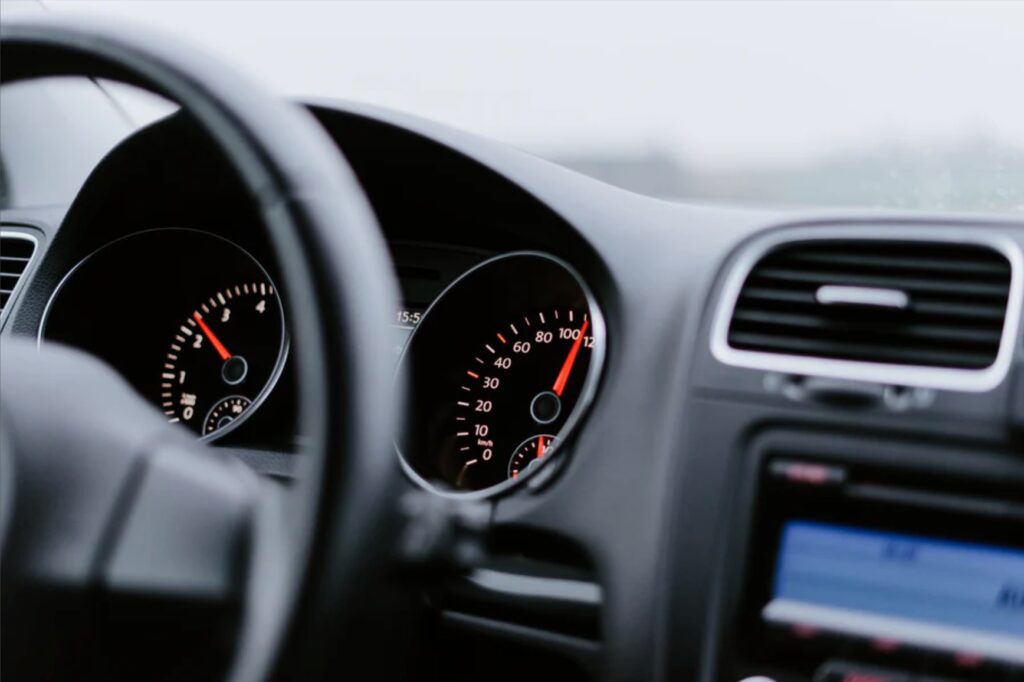Hired and Non-Owned Autos: Don’t Drive Up Liabilities
The following material is provided for informational purposes only. Before taking any action that could have legal or other important consequences, speak with a qualified professional who can provide guidance that considers your unique circumstances.
Someone mentions auto fleet safety programs and you likely picture sizable companies with a large number of company-owned cars, trucks and other vehicles teaching driver’s safety to employees who drive while conducting business. Such companies can face crippling liabilities should employees drive recklessly and cause accidents, injuries or deaths. That’s why having sufficient auto insurance coverage is mandatory — and why insurance companies often require their insured firms to deliver fleet safety programs to employees.
Focus on HNOAs
Design professional firms, including architects and engineers, typically do not own large fleets of company cars. Instead, they frequently rely on employees driving their private vehicles when conducting company business. For instance, employees may use their own cars to visit jobsites, meet with clients, or have a business lunch with subconsultants.
Occasionally, employees will “hire” rental cars to use on company business. This often occurs when employees are working out of town at an offsite location.
From a liability perspective, having employees drive their own cars or rental cars on company business can be as risky as maintaining a fleet of company-owned cars. In fact, it may be even more so.
First, it is more difficult to make sure that all hired and non-owned autos (HNOAs) are properly maintained and repaired. And employees who drive only occasionally while conducting business may not have the behind-the-wheel skills of someone who drives company vehicles daily.
That’s why more and more insurance companies are now requiring their insureds who rely on employees driving their own or rented cars for business purposes to maintain a driver safety program. True, these programs may not be as robust and demanding as fleet safety programs covering multiple company-owned vehicles. But they can result in meaningful reductions in accidents, liabilities and losses related to rented or non-owned autos.
The insurance company that provides commercial auto insurance for your firm may very likely have its own auto safety program for your use. That program may include a manual full of safety tips and lessons for employees who travel on company business, whether driving company cars, their own vehicles or rental cars. If your insurer does not provide such a program, you can develop and deliver your own auto safety manual for employees who drive while conducting company business.
Your auto safety manual should identify who is approved to drive company cars, their own cars or rental cars while conducting company business. Requirements to drive on company business may include reaching a minimum age (e.g., 21 years old) and/or having five or more years of driving experience. The manual should also identify the types of company activities that employees are approved to conduct while using their personal cars.
At least every couple of years, you should collect copies of drivers’ licenses, registrations and motor vehicle records (MVRs) of each employee who drives while conducting business. When examining MVRs, look for frequency and severity of traffic accidents as well as the number of moving violations.
Note: Should you discover that an employee has a poor driving record with many accidents and violations (e.g., three or more moving violations or two or more at-fault accidents in the last three years), you should prohibit them from driving on company business. Otherwise, should the employee get in a serious accident you could be facing an increased exposure for negligence and vicarious liability. The same may be true if you fail to check an employee’s MVR and he or she has a long history of bad driving and later causes an accident while driving on company business.
When interviewing job candidates include a check of their MVRs as well. A poor driving record can be a valid reason not to hire someone applying for a job that requires driving to conduct company business.
Note that some carriers may require that your employees with poor driving records be excluded from your company’s auto policies. If so, inquire as to what policies or procedures might the carrier agree to impose on the poor drivers to remove the exclusion.
Require employees who drive their cars on business to carry a reasonable amount of liability limits on their auto insurance — say, $100,000, 250,000 or the state minimum requirement. Have employees provide certificates of insurance. See whether it’s possible (and if it makes sense) to have your company named as an additional insured on the employee’s policy. Make sure there is no “business use” exclusion on the employee’s policy.
Establish driving rules for those who drive while conducting company business. These rules may include:
- Drive within the legal speed limit. Do not use radar detectors while driving on company business.
- Obey all stop signs, lighted signals, yield signs and all other traffic signs.
- Wear seatbelts at all times; driver and all passengers.
- Maintain adequate distance from cars ahead of you.
- Do not talk or text on a cell phone or carry on other distractive activities that result in inattentive driving. Pull off to a safe place before making or accepting phone messages. (Some carriers now consider distractive driving to be a very serious offense, on par with driving under the influence (DUI.)
- Limit the time spent driving to avoid fatigue.
- Prohibit drinking of alcoholic beverages or use of recreational drugs before or while driving.
Your auto safety manual should also include detailed instructions regarding what to do in the event of a traffic accident. This accident reporting kit should explain how to act at the accident site to ensure the safety of all parties involved in the incident and lessen potential liabilities. The reporting kit should also provide instructions on how to gather accident information to be delivered to the driver’s supervisor or another company representative within 24 hours. It also will explain how to conduct an accident analysis and gather recommendations for corrective action within three days.
What about HNOA Insurance?
What happens if an employee has an accident while driving his or her car or a rental car while conducting company business? Typically, the employee’s personal auto insurance policy provides primary coverage when he/she is driving his/her own car. For hired cars, the car rental companies will likely offer, for a price, added coverage for physical damage and other losses to the hired car.
But even with both of these policies in place, you may face coverage gaps that leave your company with substantial liabilities. For instance, an employee may hit a pedestrian while driving away from a jobsite. There could be hundreds of thousands of dollars in damages for physical injuries and pain and suffering that far exceed the coverage limits on the employee’s or the rental car company’s policies.
HNOA insurance can cover these gaps by providing property damage and bodily injury coverage for your company. The HNOA coverage is typically offered as an endorsement to your company’s commercial auto or general liability policy, but can also be purchased as a stand-alone policy.
There is often some confusion regarding what HNOA insurance actually covers. HNOA insurance covers commercial auto liability damages including settlements, judgments, attorney fees and other court costs related to an auto accident. HNOA is liability insurance and only covers damages incurred by other parties due to the actions of a company driver.
For example: Your employee causes an accident while driving his car on company business. The HNOA policy covers liability for damages to injured parties (including physical damage to another person’s automobile, medical expenses for bodily injury to outside parties, and legal expenses related to a lawsuit from the injured party), but not damages to the employee’s car or the employee’s personal injuries. Those damages would most likely be covered by the employee’s personal insurance. Also, because HNOA insurance is secondary to the employee’s personal policy, it only comes into effect when the employee’s policy limits for property damage and/or medical expenses have been exhausted.
Some types of losses, such as the theft of business personal property from the vehicle, may not be covered by the HNOA policy. Important: Make sure you are thoroughly familiar with the details of your HNOA policy. As a PLAN agent experienced in meeting the needs of design professionals, we can help you develop an insurance program that provides the desired level of coverage.
To get HNOA coverage, you’ll need to complete a supplemental application. Your insurance company will likely need to know, among other things:
- Your total number of employees and the number who regularly drive their cars while conducting company business
- The frequency with which employees use their personal vehicles when conducting company business
- The personal auto insurance limits you require employees who regularly drive their vehicles while conducting business to maintain
- What type of driver safety policies, education programs and manuals you provide to employees
- The purposes for the use of non-owned vehicles
- Your estimated annual mileage and costs for the short-term (typically defined as fewer than six months) renting or leasing of hired automobiles
- The types of cars and other vehicles you hire
- The uses of these hired vehicles
- Whether you purchase liability insurance from the rental company.
Finally, asking employees to use their own cars while conducting company business may impose extra costs and other burdens on them, especially if you are requiring them to increase insurance limits or the frequency of scheduled inspections and maintenance. Consider whether a reimbursement program is called for to cover extra costs and wear-and-tear on employee vehicles. Realize that your increased risk management practices regarding non-owned and rented vehicles may result in lowered insurance premiums to help you offset any added company costs of a vehicle safety program. By making safety a top priority and preventing accidents, you may be saving costs and saving lives.
Can We Be of Assistance?
We may be able to help you by providing referrals to consultants, and by providing guidance relative to insurance issues, and even to certain preventives, from construction observation through the development and application of sound human resources management policies and procedures. Please call on us for assistance. We’re a member of the Professional Liability Agents Network (PLAN). We’re here to help.
STUCKEY INSURANCE focuses on providing Professional Liability and Employee Benefits for Architects, Engineers, Accountants and Attorneys in Arizona. Please call us if you would like to schedule a consultation for your other insurance needs.
Legal Disclaimer: This message does not, and is not intended, to contain legal advice, and its contents do not constitute the practice of law or provision of legal counsel. The sender cannot be held legally accountable for actions related to its receipt.


